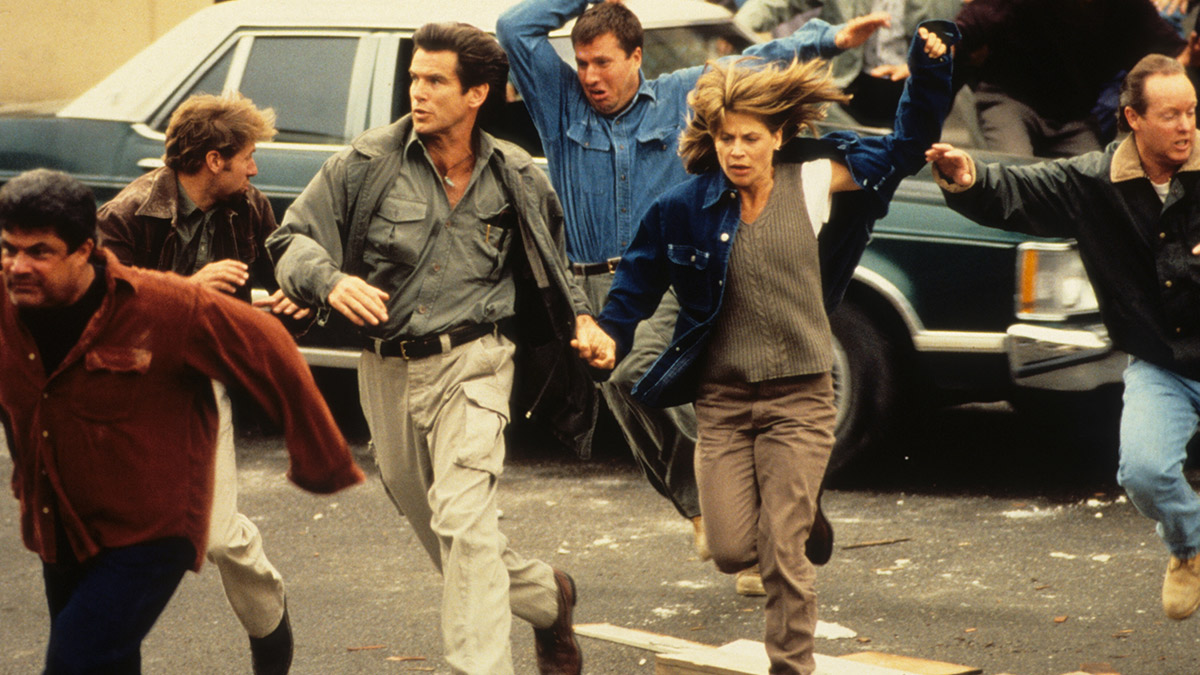
(c) Photofest / Getty Images
``Dante's Peak'' How was the powerful disaster scene created in an era when CG was underdeveloped? (Part 2)
2022.04.06
mudflow scene
The Geological Survey staff waited until the last minute for Harry and his friends to return. However, sensing their limits, they board a Humvee driven by the National Guard and begin evacuation. Harry's boss, Paul Dreyfuss (Charles Hallahan), also follows the convoy in the Institute's van. Around that time, the snow on the top of the mountain melts, causing the dam to burst and a lahar (volcanic mudflow) to occur. While descending the mountain, they attacked a convoy of National Guard soldiers who were unfortunately crossing a railroad bridge. Most of the cars made it across, but only the van carrying Paul was left behind. The bridge was washed away and he was swallowed by the torrent.
Nowadays, fluid simulation has developed, and most works use CG floods and tsunamis. However, at the time of production, the technology was unfinished. Therefore, there is no choice but to use real water, but the amount is directly connected to reality. It was calculated that 150,000 gallons (approximately 568 kiloliters) of water would be required per second to create a powerful flood, and a huge tank with a capacity of 680,000 gallons (approximately 2,574 kiloliters) was required to store this water. designed. McClung ordered a 1:3 scale miniature to create realistic water splashes, and the set was assembled on the runway at Van Nuys Airport.
But tests showed that even this wasn't enough, so eight 5,000-gallon-per-second tanks were added along the flow path. Additionally, pumps and shutters were installed at key points to control the flow.
Emulsifiers were mixed with black and brown food dyes to give the water the appearance of cloudiness caused by volcanic ash, and petroleum was also poured into the bubbles to reduce surface tension. In addition, to represent the debris, large amounts of small pieces of wood, twigs, and sawdust were thrown in to create a look exactly like Lahar's news footage. Because there was no room for failure in the scene of the dam bursting, 11 high-speed cameras were set up, but three of them apparently had no film running.
A 9m miniature miniature railway bridge was created for vehicles to cross. It is basically made of sturdy steel so that people can work on it, but when the Schott was destroyed by a muddy stream, it was replaced with a lead replica and a hydraulic jack was attached to lift it into the air. Vehicle miniatures are produced by companies such as Vision Crew Unlimited ( https://www.youtube.com/watch?v=L662CpPt3vo ) (*9). It was so precisely constructed that it could be mistaken for the real thing, and it was operated by radio control. However, the radio control was unstable, so the solution was to use the classic method of cutting a slit in the center of the bridge, passing a metal fitting to pull the car through, and winding up a Rope passed underneath with a winch. Paul, who is swept away along with the van, and the research center staff, who watch helplessly, were added using green screen compositing.
*9 Established in 1994 as a subcontractor to Digital Domain, it was made a subsidiary of 20th Century Fox during work on Titanic. It later expanded into a full-service VFX company, but closed in 2002.

